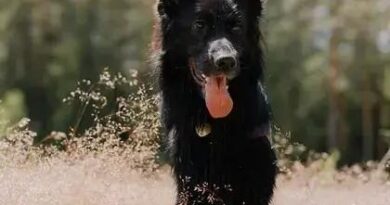What is Recompensa positiva
What is Recompensa Positiva?
Recompensa positiva, or positive reinforcement, is a fundamental concept in dog training that emphasizes rewarding desirable behaviors to encourage their repetition. This method is based on the principle that behaviors followed by positive outcomes are more likely to be repeated. In the context of dog training, this can involve treats, praise, toys, or any other form of reward that your dog finds motivating. Understanding this concept is crucial for effective training and building a strong bond with your canine companion.
The Science Behind Recompensa Positiva
The science of recompensa positiva is rooted in behavioral psychology, particularly operant conditioning, a theory developed by B.F. Skinner. This theory posits that behaviors can be modified through reinforcement or punishment. Positive reinforcement, specifically, involves adding a rewarding stimulus following a desired behavior, which increases the likelihood of that behavior occurring again in the future. This approach is not only effective but also fosters a positive learning environment for dogs.
Benefits of Using Recompensa Positiva
Utilizing recompensa positiva in dog training offers numerous benefits. Firstly, it creates a positive association between the dog and the training process, making them more eager to learn. Secondly, it helps to reduce fear and anxiety in dogs, as they are not subjected to harsh corrections or punishments. Additionally, this method strengthens the bond between the dog and the owner, as the dog learns to trust and rely on their handler for guidance and rewards.
How to Implement Recompensa Positiva
Implementing recompensa positiva involves several key steps. Start by identifying the behaviors you want to encourage in your dog. When your dog exhibits these behaviors, immediately provide a reward, whether it be a treat, verbal praise, or a favorite toy. Consistency is crucial; ensure that you reward the behavior every time it occurs initially, gradually transitioning to intermittent reinforcement as the behavior becomes more reliable. This method helps to solidify the behavior in your dog’s repertoire.
Common Mistakes in Recompensa Positiva
While recompensa positiva is an effective training method, there are common mistakes that trainers can make. One frequent error is rewarding the dog after the behavior has ceased, which can confuse the dog about what action is being reinforced. Another mistake is using rewards that are not motivating for the dog, which can lead to disinterest in the training process. It’s essential to observe your dog and choose rewards that resonate with them to ensure effective reinforcement.
Timing is Everything
In recompensa positiva, timing is critical. The reward must be given immediately after the desired behavior occurs to create a clear connection in the dog’s mind. Delayed rewards can lead to confusion, as the dog may not associate the reward with the specific behavior you intended to reinforce. Practicing good timing will enhance the effectiveness of your training sessions and help your dog learn more quickly.
Using Different Types of Rewards
Recompensa positiva can be implemented using various types of rewards, which can be tailored to suit your dog’s preferences. Treats are the most common form of reward, but some dogs may respond better to verbal praise, physical affection, or playtime with their favorite toy. Experimenting with different rewards can help you determine what motivates your dog the most, allowing you to create a more effective training regimen.
Recompensa Positiva vs. Negative Reinforcement
It’s essential to distinguish between recompensa positiva and negative reinforcement. While recompensa positiva involves adding a pleasant stimulus to encourage behavior, negative reinforcement entails removing an unpleasant stimulus when the desired behavior occurs. For example, if a dog stops barking when given a command, and the owner stops the noise, that is negative reinforcement. Positive reinforcement is generally preferred in dog training, as it promotes a more positive and trusting relationship between the dog and owner.
Long-Term Effects of Recompensa Positiva
The long-term effects of using recompensa positiva in dog training are profound. Dogs trained with this method tend to exhibit more reliable and consistent behaviors, as they are motivated by the rewards they receive. Additionally, these dogs often display higher levels of confidence and a willingness to engage in training sessions. Over time, the bond between the dog and owner strengthens, leading to a more harmonious relationship and a well-behaved pet.



